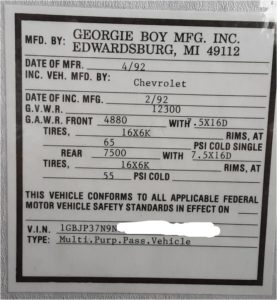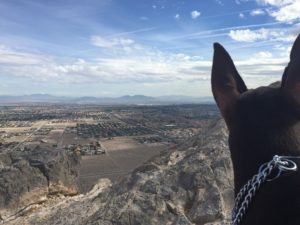This may be one of the most important yet likely the most ignored page of all.
GVWR or Gross Vehicle Weight Rating and GAVW or Gross Axle Weight Rating are critical information that most people fall into very distant categories.
- Group 1: People that know them, pay close attention them and respect them.
- Group 2: People that have no clue. This is likely the most common of many new RVers and people in general. They assume, if it fits in the unit, it must be good. This is far from reality.
- Group 3: Know about them but assume (dangerously) that they are not important and as ‘great drivers’ they can handle the issues if there are any and besides – they got away with it before, this will be no different. Famous last words.
First a discussion on what these terms mean.
GWVR (Gross Vehicle Weight Rating) is the maximum safe total weight per the manufacturer’s total weight of the unit, the people in the unit (if drivable), all supplies (food, camping gear, clothes, etc.) and all the tanks (clean water, propane, etc.). Everything that goes in the unit AND (this is important) everything that is towed. For example, you are towing a trailer with two off-road motor cycles, a couple gas cans full of gas, spare tires plus miscellaneous supplies-tools-equipment.
GAWR (Gross Axle Weight Rating) is the maximum safe individual axle weight per the manufacturer. In the sample provided, this is a two axle unit so it lists two axles. If there were more axles they would also be provided.
It is possible for all the individual axles to add up to a total greater then the GVWR. It is important to not exceed any of the numbers. Even if the total of individual axles are 1,000 pounds more then the GVWR, the GVWR is still the max you can have.
Determining GVWR and GAWR
This information is commonly on the manufacture’s Vehicle ID Plate along with such items as VIN, Date of Manufacture, etc.

The GVWR for this unit is 12,300 pounds with the combined 4,880 pounds on the front axle and 7,500 on the rear. Both sets of numbers are critical.
////
If you scale the unit dry (no water in tanks, no propane, minimal gas or diesel in fuel tanks) it will be much lighter then these numbers. Once you start adding stuff, it goes up a lot faster then you might think. Pots, pans, cooking supplies, groceries, clothes, shoes/boots, people (I push 250 by myself so that is added to the GVWR also). Plus I work on the road with computers. A desktop, two laptops, multiple monitors, scanner/printer, back up drive, etc. – more weight. The only way to truly know is spend the money at a public scale (most truck stops and many commercial grain mills or some moving/storage companies). Keep this receipt for the future.
Why all this is important
Brakes and stopping distance
loads on frames
over heating of motor
over loading of tires
Pictures below are provided by contributors or supporters of this website. If you are interested in sharing your pictures of Nevada, please drop us a note.

Hiking Lone Mountain, Las Vegas